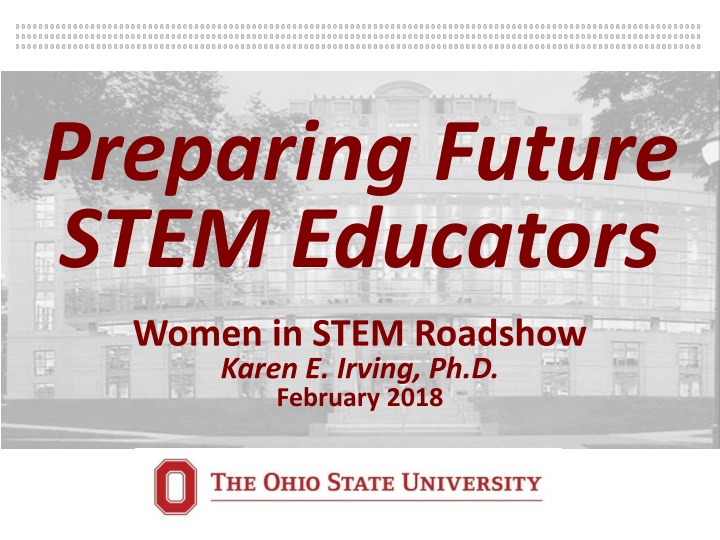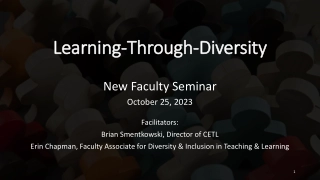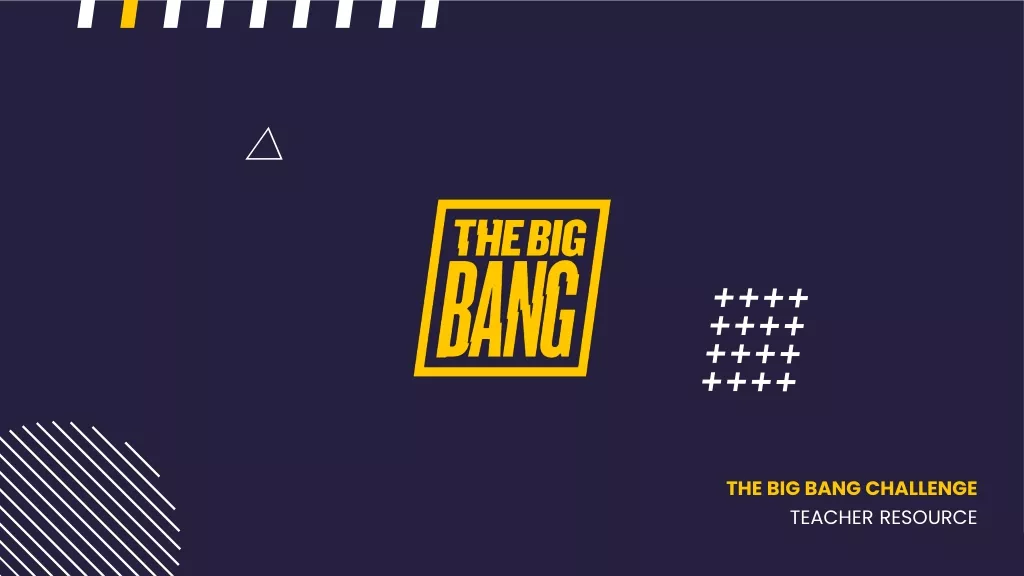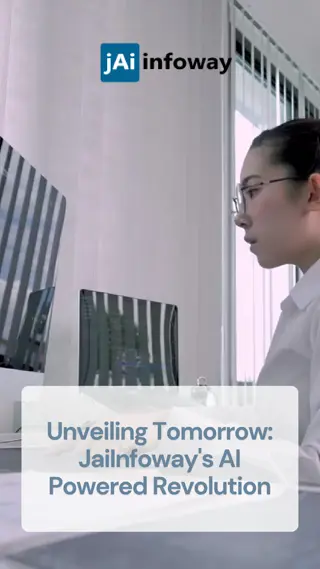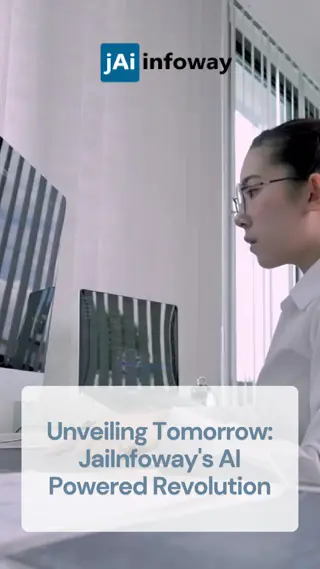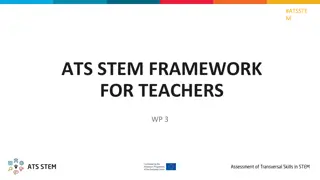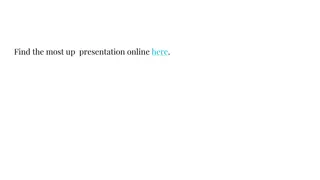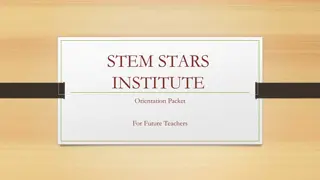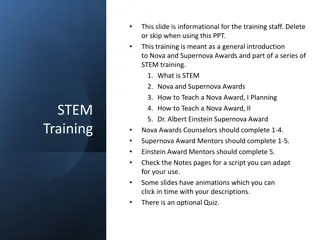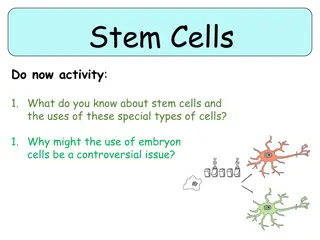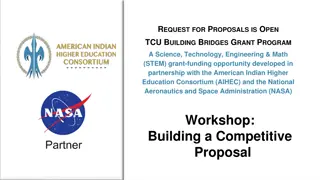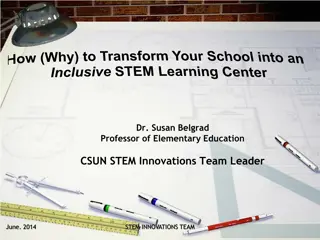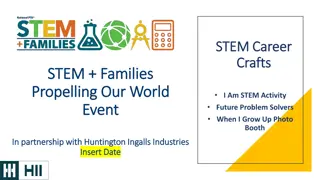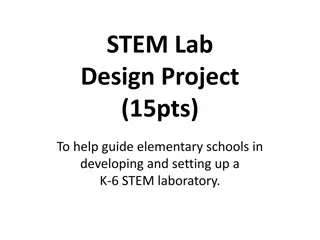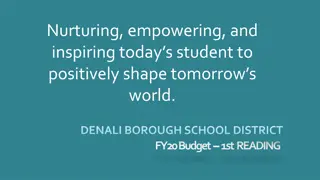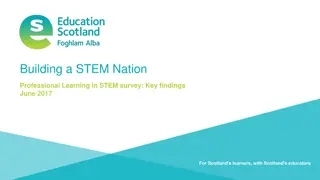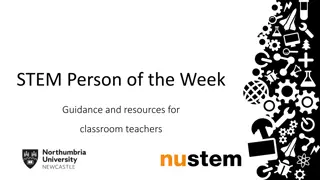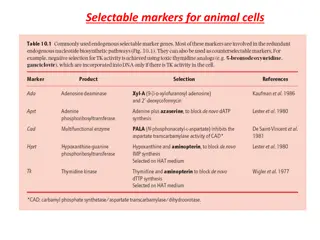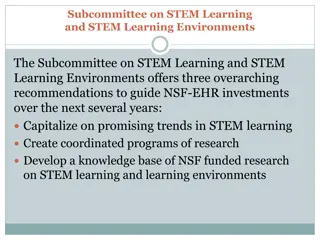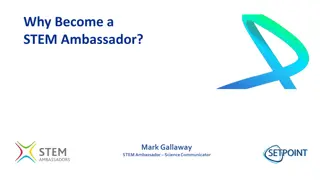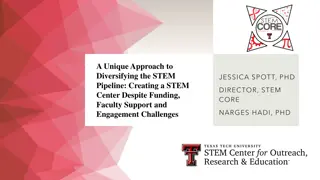Empowering Future STEM Educators for a Brighter Tomorrow
Delve into the world of STEM education through the lens of Dr. Karen E. Irving's insightful roadshow in February 2018. Explore the challenges and opportunities in preparing the next generation of STEM professionals. Discover the importance of effective teaching in bridging the gap between STEM content and education. Uncover strategies to enhance access to quality STEM education and encourage more talented individuals to pursue careers in science, technology, engineering, and mathematics.
Download Presentation

Please find below an Image/Link to download the presentation.
The content on the website is provided AS IS for your information and personal use only. It may not be sold, licensed, or shared on other websites without obtaining consent from the author.If you encounter any issues during the download, it is possible that the publisher has removed the file from their server.
You are allowed to download the files provided on this website for personal or commercial use, subject to the condition that they are used lawfully. All files are the property of their respective owners.
The content on the website is provided AS IS for your information and personal use only. It may not be sold, licensed, or shared on other websites without obtaining consent from the author.
E N D
Presentation Transcript
Preparing Future STEM Educators Women in STEM Roadshow Karen E. Irving, Ph.D. February 2018
Overview STEM professional supply and demand What is STEM? What is science? What is science education? STEM learning challenges
Background What is STEM? Science Technology Engineering Mathematics
What is Science Background Education? Sharing of science content and processes Learners may be children, college students, or adults Includes scientific methodologies, social sciences, and science of learning & teaching Includes many different science disciplines
Supply & Demand Background US Department of Education, http://www.ed.gov/stem 2016
The Learning Challenge Only ~16% of US high school seniors are proficient in math and science ~40% of U.S. students who enter college with declared STEM majors, switch majors. If Pre-Med students are counted, ~60% leave STEM fields Drew, 2011
The Learning Challenge Students have choices about what to study. Drew, 2011
The Problem Increase the supply of talented STEM professionals Teaching and learning STEM is difficult High quality graduates are needed How can you broaden access to STEM education in India?
Preparing to Teach Effective teaching is challenging STEM teacher candidates must understand their STEM content as well as how to teach that STEM content to others.
Good Teaching Matters Systematic, planned, implemented and evaluated educational programs work better Realistic and measurable outcomes are needed Talented teachers help produce talented scientists, engineers, and mathematicians
Science of Teaching & Learning If you want to know how to help people learn, you should know something about how learning works. If you want to be an effective teacher, you should know what works in the classroom. Meyer, 2011, p vii
PSYCHOLOGY Study of mental processes responsible for cognition & behavior PEDAGOGY & ANDRAGOGY Study of the science of teaching NEUROSCIENCE Study of the brain s development, structure and function
PSYCHOLOGY Study of mental processes responsible for cognition & behavior PEDAGOGY & ANDRAGOGY Study of the science of teaching EDUCATIONAL NEUROSCIENCE NEUROSCIENCE Study of the brain s development, structure and function
Educational Neuroscience Emerging scientific field Explores the interactions between biological processes and education Cognitive neuroscience Educational psychology Educational technology Educational theory Meyer, 2011, p 2
Preparing STEM Educators STEM content knowledge STEM research experience Science of learning (instruction & assessment) Teaching practice & mentoring
Teaching & Learning Instruction Learning Assessment Meyer, 2011, p 2
Teaching and Learning in the 21st century Post-millennial technologies have changed the nature of pedagogy & andragogy Opportunities for students to engage with content have changed
Teaching and Learning in the 21st century Huge volumes of information instantly available Time and distance barriers different Networking opportunities vastly increased OERs and GNUs reduce financial burden
Teaching and Learning in the 21st century
MOOCs at Ohio State University (OSU) Provide for the common good Platform to experiment with different teaching methods Collect data about technology-empowered learning experiences Reach a global audience Promote awareness about the university Boost enrollment
MOOCs at OSU 2012 partnership with Coursera to offer MOOCs By 2013, >101,000 students from 150+ countries enrolled Expanding the global impact of the university while helping to inform the way we teach on campus.
Teaching and Learning in the 21st century Established practices are challenged by modern technologies Lecture halls Rigid timelines Schedules Controlled access to learning resources Traditional practice
Teaching and Learning in the 21st century Student choice in learning pathways Changing relationships between students and universities Administrator choice of free resources like TED talks, MOOCs, OERs Student expectations for digital and social media
Teaching and Learning in the 21st century Must be relevant & competitive Provides knowledge and skills on the cutting edge Students must know how and know what Collaborative teamwork skills important Making informed choices with incomplete information
International Students in the USA
Indias Challenge Competitive higher education environment Global economy 21st century communications opening new educational opportunities Improved pre college educational opportunities Enormous human capital potential
Science Inquiry What kinds of questions can science answer? How do scientists design and conduct science investigations? What kinds of tools and techniques do they use?
Science Inquiry How do they recognize alternative theories? How do they communicate problems & explanations?
Lets try a small Science Inquiry What do you observe? What can you infer? What is the difference between an observation and an inference?
Lets try a small Science Inquiry If we look at the 6th side of the cube, what will we see? With your group come to a decision. Provide evidence to support your decision.
Lets try a more difficult Science Inquiry Each group has one cube. Do not touch the cube with your hands. You may use the small wooden spoon to touch it. Do not turn it over. Collect evidence about the cube.
Lets try a more difficult Science Inquiry What do you observe? What can you infer? What do you think you will find on the hidden side? Make an argument supported with evidence for your ideas.
Lets try a more difficult Science Inquiry How confident are you in your argument? Could you be wrong? Is there more than one possible choice?
Lets try a more difficult Science Inquiry What information might help you decide between the alternatives? A new technology has been invented that could help you gather more information .
Lets try a more difficult Science Inquiry Use your new technology to check one number on the corner of the hidden side. What number do you find? Does this information help you decide among different alternatives?
Lesson Design 5E Engage Explore Explain Elaborate Evaluate
What does this lesson teach? Scientific explanations are Based on empirical data Made in the public space Tentative Historical (based on previous info) Probabilistic (statistically based) Assume cause-effect Limited
How to find the lesson National Academy of Science (NAS) Teaching about Evolution and the Nature of Science http://www.nap.edu/catalog/5787.html
Take Home Thoughts India needs talented STEM professionals Excellent teachers are needed to produce STEM professionals Teaching is based on science You can be a STEM teacher and contribute to the future of India
Thank You Dr. Karen E. Irving Irving.8@osu.edu
